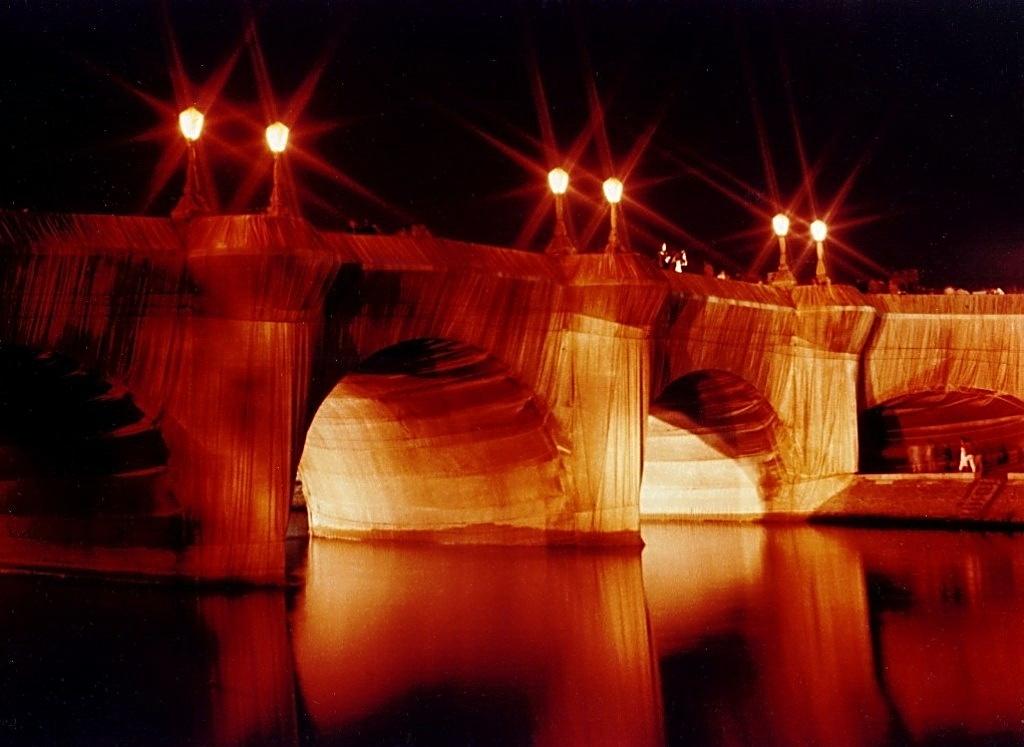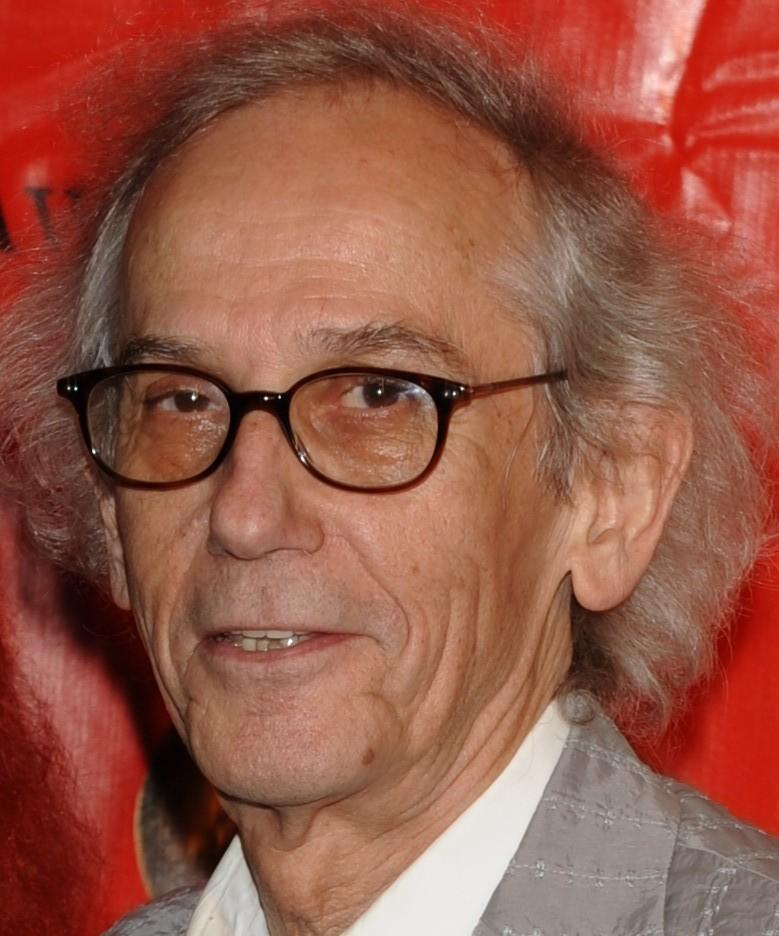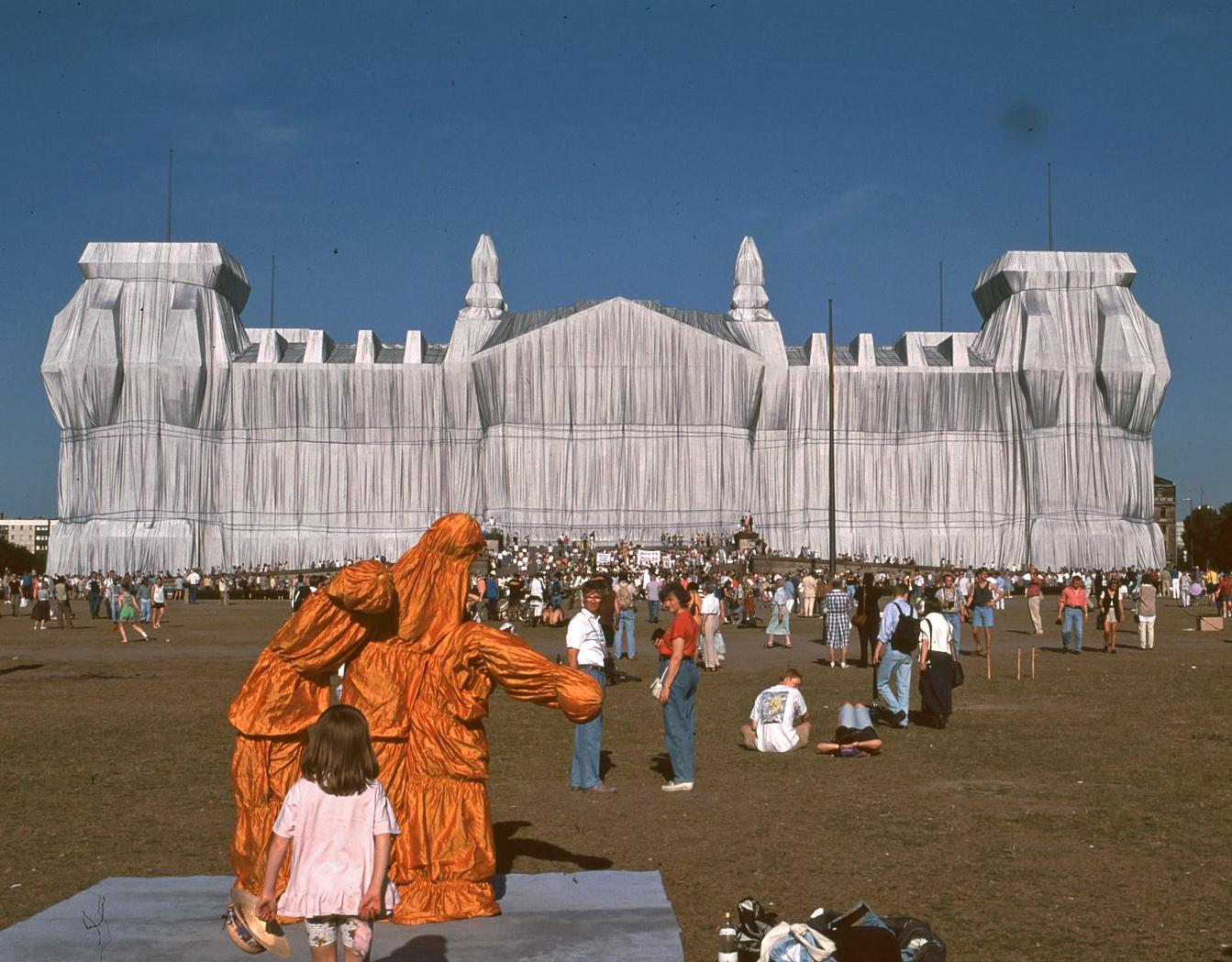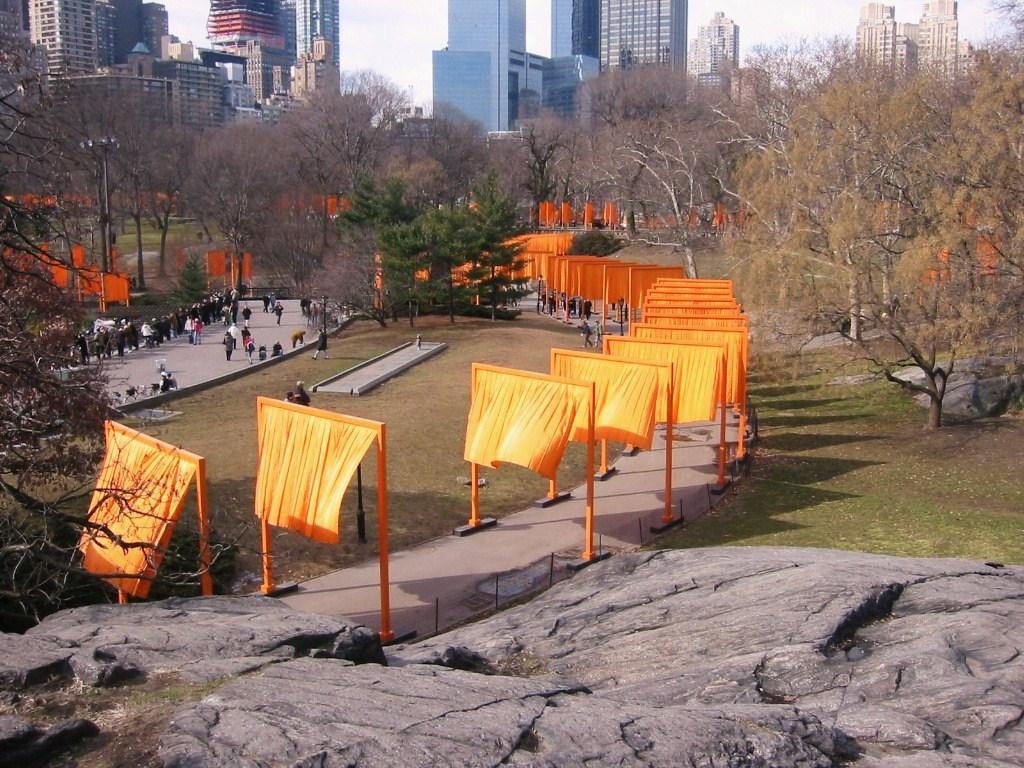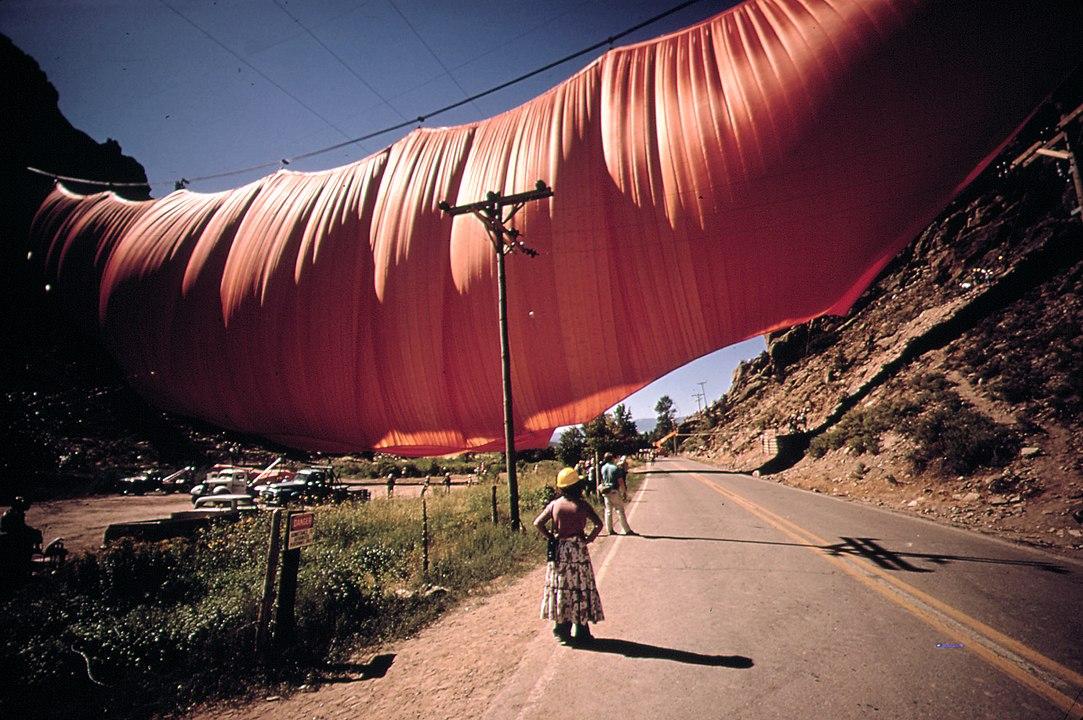The works Christo and Jeanne-Claude are best-knows for are their wrapping of monuments in giant sheets of fabric. Nearly 1.1 million square feet of fireproof polypropylene fabric with 9.3 miles of rope were used to completely cover Berlin’s Reichstag building in 1995. A plan in the works for decades, the installation drew millions of visitors.
Christo’s next project was to wrap the Arc de Triomphe in Paris. Set to take place in October 2021, Christo and Jeanne-Claude had been long been planning and working to get permission for this project. For many of their works, getting access to buildings and landscapes from private owners and governments is a process as complex as creating the work itself. In fact, they considered political lobbying, fundraising, engineering, and environmental impact studies as part of the artistic work.
Christo and Jeanne-Claude, who shared a birthday, met in 1958, and their artistic collaboration began soon after. For much of their career, Christo was given sole credit for their works, a strategic decision the couple made to further their career. In 1994, he began insisting on fully sharing the bill with Jeanne-Claude, and retroactively added her name to all of this works, reflecting the collaborative nature of their relationship.




